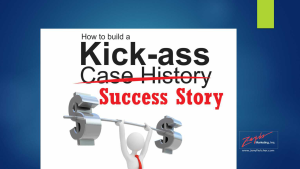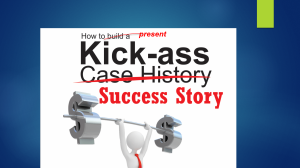30 Second Marketing Part 1
“It never fails. You walk into a place, say hello and within minutes you get the question,” I said. “It happens to every consultant, coach and professional, daily.”
Chris, our digital marketing director and the youngest member of the lunch bunch  blinked and asked, “What Question?”
blinked and asked, “What Question?”
Kate rolled her eyes, took a sip of iced tea and said, “It is THE Question. It is the simple request from someone to help identify you by the career path you are on. It is stock-in-trade for sales folks like me whenever we meet someone new.”
“It is the single most asked question in the USA,” I said. “And most people trip all over themselves trying to answer it.”
Chris asked again, “So what is the question?”
Gail, our resident writer, put him out of his misery saying, “The question is: What do you do?”
Bubba, the branding Buddha, drawled with his usual southern charm, “Theahs just no way you can avoid it. Seems like folks kindly want to put you in a little box in their brain with a label stuck on it that fits their piddly memory.”
“You got that right,” I responded. “People always try to categorize new information and that means if you want to be remembered you need to do whatever you can to avoid what Bubba called, that piddly brain box.
An elevator speech is not the answer. That approach has come and gone.”
“But everybody says that you have to have an elevator speech if you’re going to be any good at networking,” said Chris.
“Everybody?” Asked Rick. “I don’t think so. The uninformed…maybe. The slow to understand the difference between how to market and how to sell…probably. Those that don’t understand the primary lessons of direct marketing, where I make a living…for sure. There are way too many people out there that just don’t get it.”
“A conversation instead of a commercial is the right answer,” Kate said. Most people will take interest in you and your profession if it is presented in an interesting way. But if you fall into the trap of describing yourself in common terms you lose. For instance, which would you rather talk to, a guy who says I’m a cpa” or one that tells you, “They call me Captain Crunch.’ That’s what Fletch calls a hook.”
Chris turned to me and asked, “What’s a hook?”
I told him, “A hook is the opening gambit of 30 Second Marketing which is a formula that helps you get to that conversation you want to have to make yourself memorable and give the person you’re chatting with ways to explain your difference to your ideal prospects.
The 30-Second Marketing formula:
Hook ‘em (Get their interest)
Hold ‘em (Tell them the problem you solve for most clients)
Pitch ‘em (Tell them how you solve it)
Close ‘em (Persuade them to take the next step)
The problem most consultants have is that they know way too much about their area of expertise so they have difficulty sorting out simple terms that people understand which relate to the reason they are looking for a consultant or professional to help them.
For example:
I’m a mechanic versus I make cars go
I’m an IT expert versus I make computers do it your way
I’m a website developer versus I build web sites that make rain
The Takeaways:
Make your answer memorable by simplifying it and putting the parts of the formula in language just about everyone can understand.
Test it. Try it on people you don’t know including prospects and pay attention to what they say and do. Then revise based on remarks, reactions and responses.
Avoid lip service—the kind of responses that friends and family give you that aren’t realistic but rather are intended to make you feel good.
Jerry Fletcher’s blog recaps conversations with clients, prospects and the unruly mob of business development professionals he consorts with. They discuss marketing that works from solopreneur to enterprise level. Jerry, The Consultant’s Communication Consultant, is the ringleader and “Watson” of the dialogue. Sign up for the blog and other publications at: www.JerryFletcher.com/Profit.html
Jerry has been researching and implementing small business marketing that builds businesses, careers and lives of joy for 25 years as President of Z-axis Marketing, Inc. Learn more at www.JerryFletcher.com
Schedule a personal appearance. Jerry speaks internationally on Networking, Marketing and Contact Relationship Magic. www.NetworkingNinja.com











